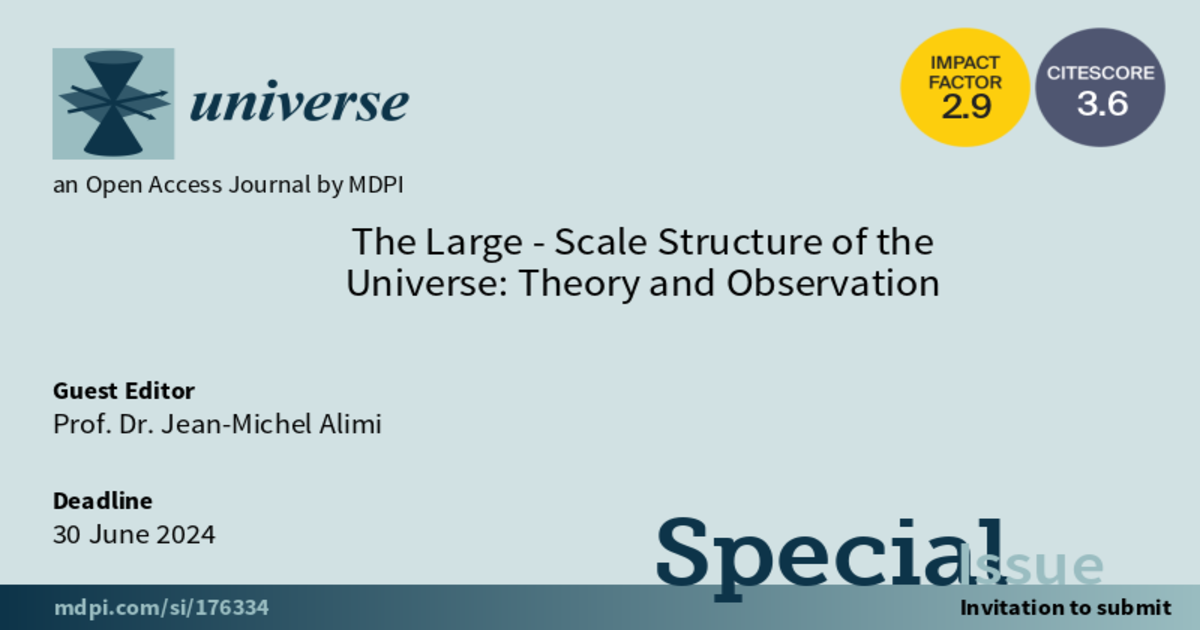The Large-Scale Structure of the Universe: Theory and Observation
A special issue of Universe (ISSN 2218-1997). This special issue belongs to the section "Cosmology".
Deadline for manuscript submissions: 30 June 2024 | Viewed by 1200

Special Issue Editor
Interests: cosmological physics; numerical cosmology; large scale structure formation; scalar-tensor and modified gravity theory; backreaction and inhomogeneous universes
Special Issues, Collections and Topics in MDPI journals
Special Issue Information
Dear Colleagues,
Large-scale structure formation is a fundamental aspect of cosmology, covering the growth of galaxy clusters, filaments, walls and voids that shape the cosmic web. Theoretical progress, observational techniques and the increasing accumulation of data have revolutionized our understanding of large-scale structures.
This Special Issue aims to be a place of collaborative learning and to foster discussions that advance research in this dynamic field. By sharing diverse perspectives and cutting-edge research, the issue will contribute to collective knowledge and inspire new avenues of exploration in large-scale structure formation. By embracing the multidisciplinary nature of cosmology and presenting the latest theoretical and observational advances, this Special Issue aims to provide a comprehensive resource for researchers.
We encourage researchers to submit papers that provide new theoretical frameworks, present new observations or offer critical analyses of existing models. Contributions that attempt to bridge the gap between theory and observation, propose innovative methodologies or explore new ideas in the study of large-scale structure formation are particularly welcome. All articles submitted will undergo rigorous evaluation by a panel of experts in cosmology.
Prof. Dr. Jean-Michel Alimi
Guest Editor
Manuscript Submission Information
Manuscripts should be submitted online at www.mdpi.com by registering and logging in to this website. Once you are registered, click here to go to the submission form. Manuscripts can be submitted until the deadline. All submissions that pass pre-check are peer-reviewed. Accepted papers will be published continuously in the journal (as soon as accepted) and will be listed together on the special issue website. Research articles, review articles as well as short communications are invited. For planned papers, a title and short abstract (about 100 words) can be sent to the Editorial Office for announcement on this website.
Submitted manuscripts should not have been published previously, nor be under consideration for publication elsewhere (except conference proceedings papers). All manuscripts are thoroughly refereed through a single-blind peer-review process. A guide for authors and other relevant information for submission of manuscripts is available on the Instructions for Authors page. Universe is an international peer-reviewed open access monthly journal published by MDPI.
Please visit the Instructions for Authors page before submitting a manuscript. Submitted papers should be well formatted and use good English. Authors may use MDPI's English editing service prior to publication or during author revisions.
Keywords
- cosmology
- large-structure of the universe
- galaxy clusters
- cosmic voids
- cosmic web
- gravitational instability
- gravity theories
- cosmological parameters
- dark matter
- dark energy
- redshift surveys
- gravitational lensing
- numerical cosmology
- statistical learning
- theory
- observation





